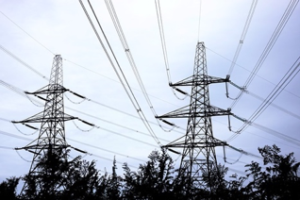APPLICATIONS OF TECHNOLOGY:
- Grid-scale energy storage and backup storage
- Industrial, commercial, residential energy storage
BENEFITS:
- Offers a factor of 3 increase in energy density compared with existing Ni-Zn flow-battery systems as it removes the need for separators
- Provides simplified manufacturing due to re-designed thick electrodes with none of the safety concerns in comparison with lithium-ion batteries for grid storage
- Battery system can easily be scaled to fit the needs of the consumer (e.g., large scale companies or individuals)
- Aqueous based alkaline electrolyte – reduced chance of fire
BACKGROUND:
- In order to combat climate change by switching from fossil fuels to renewable sources of energy generation, there is a critical need for the development of new energy storage technologies with a smaller footprint. A robust network of energy storage facilities is essential for the stability of a grid fueled primarily by wind and solar power. Given the scale of the need for energy storage, it is necessary for the storage technology to be low-cost, safe, and recyclable at the end of its life.
TECHNOLOGY OVERVIEW:
Researchers at Berkeley Lab have developed a novel combined design for a flow-through battery electrode and a flow cell that can be used with a variety of different chemistries for 6 to 12-hour long durage energy storage.
The design addresses the limitations of previous electrodes by enabling increased thickness of both the anode and cathode sections and integration with efficient flow cells. Researchers developed a means of calculating the thickness where electrolyte resistance was a reasonable fraction of the total resistance as a part of developing the prototype system. A good use for this technology will be for balancing energy output from renewable sources such as wind and solar with 6-12 hour charge and discharge periods.
The flow-through design improves the achievable energy density for nickel zinc flow batteries, lowers the manufacturing precision required, and simplifies the material recovery at the end of life. This highly scalable battery system is projected to have substantially lower total lifetime cost than leading Li-ion systems. As energy storage facilities become increasingly larger, savings from low up-front costs and efficient recycling will become continuously important for keeping the cost of renewable energy storage affordable.
DEVELOPMENT STAGE: Proven principle
FOR MORE INFORMATION:
https://appliedenergyscience.lbl.gov/index.php/node/210
PRINCIPAL INVESTIGATORS:
STATUS: Patent pending.
OPPORTUNITIES: Available for licensing or collaborative research.
SEE THESE OTHER BERKELEY LAB TECHNOLOGIES IN THIS FIELD:
RFB Model: Simulation Model for Metal / Ion Flow Battery 2017-164
